The retail price of Wilson Audio's smallest bookshelf speaker (already again 5 years old Wilson Audio's entry-level model) is $9800 or $10,500 per pair in the United States and in Germany 12.000€-14.000€ depending on the color selected (the five options available are new to Wilson’s repertoire of standard finishes) and selected accessories.
A friend of me have heard this model anywhere and want to build a loudspeaker in similar kind.
However, it should not be an exact clone of the original, but just a mini monitor with good sounded and reliable long live modern drivers.
The enclosure/cabinet will be double-walled (sandwich) with sand/lead shot filling.
He knows how to design good loudspeakers and crossovers (maybe one will arise a no-compromise version instead a "No-Compromise Compromise").
The question should therefore only be whether the Scan Speak drivers mentioned below (which of course are not absolutely identical to those of Wilson audio's custom made from Scan-Speak), are in general a good choice.
Maybe some members have experiences with the mentioned models from Scan Speak's Illuminator and Revelator-series:
https://www.scan-speak.dk/datasheet/pdf/15wu-8741t00.pdf (~750€-800€)
https://www.scan-speak.dk/datasheet/pdf/15w-8530k00.pdf (~440€-450€)
https://www.scan-speak.dk/datasheet/pdf/15w-8531k00.pdf (~400€-450€
https://www.scan-speak.dk/datasheet/pdf/d3004-662000.pdf (~450€-500€) those under
https://www.scan-speak.dk/datasheet/pdf/d2904-710003.pdf (~560€-650€)
Thanks for comments.
Crossover network is executed in an outdoor version (no compromises for parts due too low space and no compromises due no possibility of bi-amping mode).
Except crossover parts and cabinet the costs (for the drivers) below 1500€/pair
The expected costs for the crossover parts in the kind of those under
https://www.mundorf.com/audio/en/shop/coils/air_coils/mcoil_cf/MCoil-AirCore-and-Foil/?card=4311
https://www.mundorf.com/audio/en/shop/Resistors/MResist_ultra/
https://www.mundorf.com/audio/en/sh...preme_evo_oil/MCap-SUPREME-EVO-Oil/?card=2735
are approx 500€-800€
Concerning the TuneTot here some URL's (manual and some reviews):
https://www.wilsonaudio.com/media/347/manual-tunetot.pdf
https://www.wilsonaudio.com/media/497/review-tunetot-tunetot-review.pdf
https://www.audiosciencereview.com/...etot-review-high-end-bookshelf-speaker.29219/ (best review - there is follow to read:
There is no question that there are some clear objective/engineering errors in the design of Wilson TuneTot. The port is tuned too high and the on-axis/directivity response is poor. What is strange though that the impact of these on the fidelity of the speaker is not at all this obvious. Either I am influenced by the showroom sound as much as the next guy or getting off-axis to be right in my rather reflective room overcomes issues in on-axis response. It is also possible that all the money that has gone to building such an extremely dense speaker and keeping distortion low is paying benefit here. One wonders how much better these would sound if they had had preserved all of this and at the same time didn't have the design errors.)
https://www.theabsolutesound.com/articles/wilson-audio-specialties-tunetot/
https://www.hifinews.com/content/wilson-audio-tunetot-loudspeaker
https://www.hifi.blog/wilson-audio-tunetot-review-the-compact-high-end-reference-monitor/
https://www.fidelity-online.de/wilson-audio-tunetot-kompaktlautsprecher/
https://www.lowbeats.de/test-wilson-audio-tunetot-der-ultimative-high-end-monitor/
https://www.schuering-highend.de/produkt/wilson-audio-tune-tot/
https://www.hifi-voice.com/testy-a-recenze/reprosoustavy-regalove/2222-wilson-audio-tunetot
https://www.diyaudio.com/community/threads/quick-question-for-the-experts.334578/
A friend of me have heard this model anywhere and want to build a loudspeaker in similar kind.
However, it should not be an exact clone of the original, but just a mini monitor with good sounded and reliable long live modern drivers.
The enclosure/cabinet will be double-walled (sandwich) with sand/lead shot filling.
He knows how to design good loudspeakers and crossovers (maybe one will arise a no-compromise version instead a "No-Compromise Compromise").
The question should therefore only be whether the Scan Speak drivers mentioned below (which of course are not absolutely identical to those of Wilson audio's custom made from Scan-Speak), are in general a good choice.
Maybe some members have experiences with the mentioned models from Scan Speak's Illuminator and Revelator-series:
https://www.scan-speak.dk/datasheet/pdf/15wu-8741t00.pdf (~750€-800€)
https://www.scan-speak.dk/datasheet/pdf/15w-8530k00.pdf (~440€-450€)
https://www.scan-speak.dk/datasheet/pdf/15w-8531k00.pdf (~400€-450€
https://www.scan-speak.dk/datasheet/pdf/d3004-662000.pdf (~450€-500€) those under
https://www.scan-speak.dk/datasheet/pdf/d2904-710003.pdf (~560€-650€)
Thanks for comments.
Crossover network is executed in an outdoor version (no compromises for parts due too low space and no compromises due no possibility of bi-amping mode).
Except crossover parts and cabinet the costs (for the drivers) below 1500€/pair
The expected costs for the crossover parts in the kind of those under
https://www.mundorf.com/audio/en/shop/coils/air_coils/mcoil_cf/MCoil-AirCore-and-Foil/?card=4311
https://www.mundorf.com/audio/en/shop/Resistors/MResist_ultra/
https://www.mundorf.com/audio/en/sh...preme_evo_oil/MCap-SUPREME-EVO-Oil/?card=2735
are approx 500€-800€
Concerning the TuneTot here some URL's (manual and some reviews):
https://www.wilsonaudio.com/media/347/manual-tunetot.pdf
https://www.wilsonaudio.com/media/497/review-tunetot-tunetot-review.pdf
https://www.audiosciencereview.com/...etot-review-high-end-bookshelf-speaker.29219/ (best review - there is follow to read:
There is no question that there are some clear objective/engineering errors in the design of Wilson TuneTot. The port is tuned too high and the on-axis/directivity response is poor. What is strange though that the impact of these on the fidelity of the speaker is not at all this obvious. Either I am influenced by the showroom sound as much as the next guy or getting off-axis to be right in my rather reflective room overcomes issues in on-axis response. It is also possible that all the money that has gone to building such an extremely dense speaker and keeping distortion low is paying benefit here. One wonders how much better these would sound if they had had preserved all of this and at the same time didn't have the design errors.)
https://www.theabsolutesound.com/articles/wilson-audio-specialties-tunetot/
https://www.hifinews.com/content/wilson-audio-tunetot-loudspeaker
https://www.hifi.blog/wilson-audio-tunetot-review-the-compact-high-end-reference-monitor/
https://www.fidelity-online.de/wilson-audio-tunetot-kompaktlautsprecher/
https://www.lowbeats.de/test-wilson-audio-tunetot-der-ultimative-high-end-monitor/
https://www.schuering-highend.de/produkt/wilson-audio-tune-tot/
https://www.hifi-voice.com/testy-a-recenze/reprosoustavy-regalove/2222-wilson-audio-tunetot
https://www.diyaudio.com/community/threads/quick-question-for-the-experts.334578/
Attachments
-
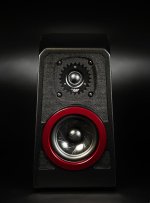 0518TOT.jpg39.7 KB · Views: 362
0518TOT.jpg39.7 KB · Views: 362 -
 0518TTFR.jpg56.8 KB · Views: 354
0518TTFR.jpg56.8 KB · Views: 354 -
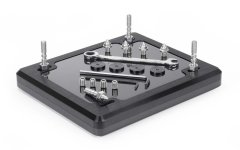 wilson-audio-tunetot-4.jpg65.4 KB · Views: 386
wilson-audio-tunetot-4.jpg65.4 KB · Views: 386 -
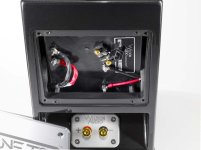 wilson-audio-tunetot-17.jpg114.2 KB · Views: 503
wilson-audio-tunetot-17.jpg114.2 KB · Views: 503 -
 Wilson_Audio_TuneTot-Setup_12.jpg175.7 KB · Views: 428
Wilson_Audio_TuneTot-Setup_12.jpg175.7 KB · Views: 428 -
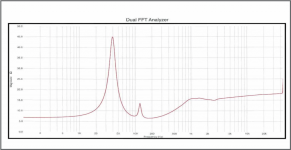 Wilson_Audio_TuneTot-Impedanzverlauf-1024x528.png115.4 KB · Views: 375
Wilson_Audio_TuneTot-Impedanzverlauf-1024x528.png115.4 KB · Views: 375 -
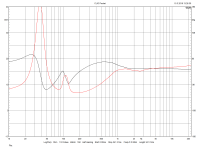 2019-06-11-TST-Wilson-Audio-Tune-Tot-m2.png30.6 KB · Views: 348
2019-06-11-TST-Wilson-Audio-Tune-Tot-m2.png30.6 KB · Views: 348 -
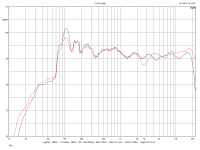 2019-06-11-TST-Wilson-Audio-Tune-Tot-m1.png32.6 KB · Views: 367
2019-06-11-TST-Wilson-Audio-Tune-Tot-m1.png32.6 KB · Views: 367 -
 818wilsontt.lab1.jpg34.7 KB · Views: 351
818wilsontt.lab1.jpg34.7 KB · Views: 351 -
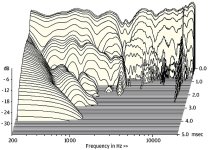 1118wilsontt.lab2.jpg96.1 KB · Views: 340
1118wilsontt.lab2.jpg96.1 KB · Views: 340
Last edited:
Why copy such a deeply flawed speaker? You've seen the measurements, which are not good at all. And in my experience at hifi shows, they sound like they measure ... not flat, with strong colorations. What's the point?
Wilson Audio’s designs are repetitive and serve the sole purpose of separating people from their money. Ask yourself what is it that you want from this speaker.
When I set out to build or design, I evaluate my situation, identify the problem and devise an effective solution. Be creative, blaze your own trail and design your dream speaker to accomplish what you really want and need.
When I set out to build or design, I evaluate my situation, identify the problem and devise an effective solution. Be creative, blaze your own trail and design your dream speaker to accomplish what you really want and need.
Truth be told, I haven't been impressed by any Wilson speaker. The ones I've heard generally make music sound uninvolving and, well, boring. They almost all have enormous anomalies in the upper midrange akin to the fourth graph in the series, which shows an octave wide 5 dB hole centered on 3 kHz [1] and overall uneven response needing octave-wide smoothing to flatten out visually -- and even then.
The big ones have a bass peak around 30-50 Hz, the medium ones around 50-80 Hz, and the tiny one you show has a lump at 100 Hz. All that might be immediately impressive in the showroom, but after a while one gets tired of everything sounding like a pig eating oatmeal. grunt schlorp schlorp grunt schlorp
Add chaotic time domain behaviour from tweeter and midrange energy bouncing around a bevy of undamped surfaces and unrounded edges, punishing amplifier loads (2 ohms!), and the "you must have these things positioned with our special oo-ah technique [2]" woo-woo, then for my money Wilson is merely Bose with more digits on the price tag.
[1] The foam around the tweeter has a serrated edge, which would be a good idea except that the depth of the serration is derisory compared with its distance from the dome so a narrow-band standing wave is set up between the dome and the foam anyway, exactly the opposite of what is desired. Note the response hole fills in to the sides, exactly what one would expect from on-axis destructive interference. They'd have been better off flush-mounting the tweeter but hey, it LOOKS LIKE SCIENCE.
[2] As Ian Malcolm says
The big ones have a bass peak around 30-50 Hz, the medium ones around 50-80 Hz, and the tiny one you show has a lump at 100 Hz. All that might be immediately impressive in the showroom, but after a while one gets tired of everything sounding like a pig eating oatmeal. grunt schlorp schlorp grunt schlorp
Add chaotic time domain behaviour from tweeter and midrange energy bouncing around a bevy of undamped surfaces and unrounded edges, punishing amplifier loads (2 ohms!), and the "you must have these things positioned with our special oo-ah technique [2]" woo-woo, then for my money Wilson is merely Bose with more digits on the price tag.
[1] The foam around the tweeter has a serrated edge, which would be a good idea except that the depth of the serration is derisory compared with its distance from the dome so a narrow-band standing wave is set up between the dome and the foam anyway, exactly the opposite of what is desired. Note the response hole fills in to the sides, exactly what one would expect from on-axis destructive interference. They'd have been better off flush-mounting the tweeter but hey, it LOOKS LIKE SCIENCE.
[2] As Ian Malcolm says
Foam? I Guess it's felt, painted black.The foam around the tweeter has a serrated edge, which would be a good idea except that the depth of the serration is derisory compared with its distance from the dome so a narrow-band standing wave is set up between the dome and the foam anyway, exactly the opposite of what is desired. Note the response hole fills in to the sides, exactly what one would expect from on-axis destructive interference. They'd have been better off flush-mounting the
tweeter but hey, it LOOKS LIKE SCIENCE.
Anyway, how can a STANDING WAVE form with: such (infinitesimal, related to the phenomenon of SW) distance; the walls...where are the boundaries? And how SW can happen with an absorbing element such as 'foam' ?
Probably you we're refering to some 'cavity' or 'tunnel' effect...
And...if it's felt? Note that felt, Natural compressed wool- felt, Is different to foam, as it's the only natural product that has acoustic properties.
The way it's used here, making Many angles to break the wave front, Is rather bi-dimensional, and could have extended to woofer(yeah, the surround moves a makes Many SWs in the space between the basket! It's called diffraction..).
Now, if a sound deadener material can be assimilated to a Wall -that stops sound because It has Mass and density and usually It Is recognized as being part of a Building that has a structure that impedes to Flex and repairs from the outside, well... that;'s life
The way it's used here, making Many angles to break the wave front, Is rather bi-dimensional, and could have extended to woofer(yeah, the surround moves a makes Many SWs in the space between the basket! It's called diffraction..).
Now, if a sound deadener material can be assimilated to a Wall -that stops sound because It has Mass and density and usually It Is recognized as being part of a Building that has a structure that impedes to Flex and repairs from the outside, well... that;'s life
I listened to their Chronosonic, top of the line... in a $1M system. With top of the line d'Agostino monoblocks and some crazy priced digital front end.Truth be told, I haven't been impressed by any Wilson speaker. The ones I've heard generally make music sound uninvolving and, well, boring.
Honestly, they were excellent at resolving detail, they made me feel like I was hanging over the orchestra, as I were a pair a Blumlein pair...
But, did they sound like an orchestra?
No.
Not to dump on Wilson here... it seems like the High End is moving in the wrong direction... emphasizing detail at the expense of realism.
Literally, if you pick any of Troels Gravesen ScanSpeak designs it should be objectively better than this little creature...
I would always go to one size bigger midbass (18W Rev) and if you just must spend some crazy amount of money than build Ellipticor bookshelf on his site. This should be in "dream area" by price, look and general feeling of something special.
I would go for Revelator 66 and wouldn't look for more expensive alternatives...
I would always go to one size bigger midbass (18W Rev) and if you just must spend some crazy amount of money than build Ellipticor bookshelf on his site. This should be in "dream area" by price, look and general feeling of something special.
I would go for Revelator 66 and wouldn't look for more expensive alternatives...
He knows how to design good loudspeakers and crossovers (maybe one will arise a no-compromise version instead a "No-Compromise Compromise").
The question should therefore only be whether the Scan Speak drivers mentioned below (which of course are not absolutely identical to those of Wilson audio's custom made from Scan-Speak), are in general a good choice.
Alright, your friend knows how to design good loudspeakers and x/o's, yet he needs help deciding whether premium drive units are good enough of a choice? Rhetorical question.
Thanks for comments.
You're welcome.
2000 € Isobase
That's the point
about 1/5 the price of the speakers. That's how at Wilson they think a speaker might be placed in the environment.
So, that base should be analyzed!
Or do you prefer to walk bare foot?!
That's the point
about 1/5 the price of the speakers. That's how at Wilson they think a speaker might be placed in the environment.
So, that base should be analyzed!
Or do you prefer to walk bare foot?!
The screw terminals, eyelets sound like scrap metal.
I could go on with the enumeration of the sound impediments.
I could go on with the enumeration of the sound impediments.
One of my old projects used a D2905/9000 tweeter which I absolutely loved, crossed to a 8530k00 (possibly 01 version) midwoofer, with a pair of 8565 woofers per side. The woofers were great. I felt the 8530s ran out of steam at relatively low spls, and were the weak spot in that speaker. Xo points were 300Hz and 1600Hz if that helps.
Rob.
Rob.
"Emphasized detail" is another name for narrow upper midrange peaks. The Wilson house sound seems to be delayed energy in the 2 to 4 kHz range as shown in the cumulative spectral decay plots here, here, and here, most likely caused by poorly managed diffraction on cabinet edges. Looking at lateral dispersion curves shows the on-axis peaks and dips are more or less compensated off-axis as one would expect from energy summing differently due to varying delays between drivers and edge diffractions, which means in-room response would be less horrible -- although still far from wonderful.Not to dump on Wilson here... it seems like the High End is moving in the wrong direction... emphasizing detail at the expense of realism.
Commenting on something else above:
The felt ring around the tweeter is worse than useless because it changes the radiation from half-space to something less then back to half-space in short order, setting up diffraction at the opening, which interferes with direct radiation from the tweeter. When the wavelength is on the order of centimetres as for upper midrange frequencies, then a centimetre discontinuity is large enough to affect propagation. If the felt were replaced by less dense foam and serrated much deeper, then the surround could have a chance at absorbing the lateral wave, but the placebo profile and dense ring are not fit for purpose. And felt supposedly being "the only natural product with acoustic properties" -- although owls, whales, crickets, and many other creatures would like a word-- does not mean it is inherently superior to a properly specified engineered material.
For nearly a decade Wilson used a notorious Focal inverted-dome tweeter with serious energy-storage problems, obvious on measurement and very obvious on audition. Yet as prices went up and up and up, every year, without fail, the Big Two magazines always gave Wilson speakers top reviews. I have never seen a bad review of Wilson in a high-profile magazine, ever.
Why? I don't know. The crossovers were unsuccessful, with extreme impedance dips and rough transitions in MF/HF region. For some reason, this harsh, forward sound became an industry standard in the high-end sector. My only guess is certain brands (Audio Research, Krell, B&W, Magico, etc.) get the inside track with the big-name reviewers, and that's just the way it is.
Why? I don't know. The crossovers were unsuccessful, with extreme impedance dips and rough transitions in MF/HF region. For some reason, this harsh, forward sound became an industry standard in the high-end sector. My only guess is certain brands (Audio Research, Krell, B&W, Magico, etc.) get the inside track with the big-name reviewers, and that's just the way it is.
Last edited:
My only guess is certain brands (Audio Research, Krell, B&W, Magico, etc.) get the inside track with the big-name reviewers, and that's just the way it is.
It is highly amusing to observe how the reviewers dance on a needle to reconcile poor measurements (e.g. B&W off axis behaviour) ) and raving reviews, so at the end of the day it is easier to publish no measurements at all... After all, a measurement is..... just a measurement. Who needs science if we can have an opinion?
- Home
- Loudspeakers
- Multi-Way
- The "No-Compromise Compromise" from Wilson Audio: "TuneTot" Mini Monitor - Worth to Clone ??